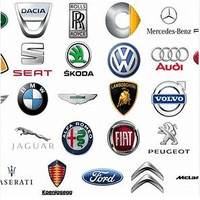Introduction
The European automotive industry, once a powerhouse of engineering excellence and economic might, is grappling with a multifaceted crisis in 2025. Plagued by soaring production costs, punitive U.S. tariffs, fierce competition from Chinese manufacturers, supply chain bottlenecks, and stringent regulatory demands for electrification, the sector faces unprecedented challenges. This “polycrisis” has led to sluggish demand, particularly for electric vehicles (EVs) and luxury models, forcing major automakers to issue profit warnings and rethink strategies. With millions of jobs at stake and billions in revenues under threat, the industry’s woes highlight broader vulnerabilities in Europe’s manufacturing base amid global trade tensions and the shift to sustainable mobility.
The Polycrisis: Key Challenges Besieging the Sector
European automakers are contending with a perfect storm of external and internal pressures. U.S. tariffs, reimposed at 25% by the Trump administration in April 2025 and potentially escalating to 30%, have severely impacted exports, especially for companies without significant North American production facilities. This has compounded issues like rising input costs for raw materials and components, exacerbated by ongoing supply chain disruptions from geopolitical conflicts and post-pandemic recovery.
Competition from Chinese rivals such as BYD and XPeng has intensified, with a domestic price war in China driving average car prices down by 19% over the past two years to around 165,000 yuan ($23,190). European firms, traditionally strong in premium segments, are losing ground in key markets like China, where demand for luxury vehicles has weakened amid economic slowdowns. Additionally, the EU’s ambitious climate goals—including a ban on new internal combustion engine (ICE) vehicles by 2035—have forced costly investments in EV technology, yet consumer adoption remains tepid due to high prices, inadequate charging infrastructure, and range anxiety.
Weak overall market demand, particularly in Europe and China, has further strained operations. The German auto industry, a cornerstone of the sector, saw revenues decline by 1.6% in the second quarter of 2025 compared to the previous year. Analysts at Fitch Ratings predict a “profitability squeeze” throughout 2025, driven by these headwinds, though most firms retain financial resilience for now. The result is an industry in impasse, with manufacturers lobbying Brussels to ease CO2 emission targets, arguing they are unfeasible without risking massive job losses.
Recent Profit Warnings: Alarming Signals from Industry Giants
The crisis has manifested in stark financial setbacks, with several leading automakers issuing profit warnings that underscore the sector’s fragility.
Volkswagen (VW), Europe’s largest carmaker, reported a staggering $1.5 billion in losses for the first half of 2025, primarily attributed to U.S. tariffs. The company’s second-quarter operating profit plummeted 29% to $4.4 billion, despite a 1.5% rise in global deliveries. VW revised its full-year operating profit margin forecast to 4-5%, down from 5.5-6.5%, and now expects flat sales instead of a 5% increase. CEO Oliver Blume highlighted the need for accelerated cost-cutting, noting tariffs’ non-temporary nature and higher sales of lower-margin EVs as key factors. Subsidiaries were hit hard: Porsche’s operating result dropped over 90% to $181 million, and Audi’s by 64% to $647 million in the second quarter.
Porsche itself issued a separate profit warning, slashing its 2025 profit margin projection from up to 7% to 2% or less due to EV rollout delays and challenges in the Chinese luxury market. The company announced it would postpone new EV launches, extend ICE production into the 2030s for models like the Panamera and Cayenne, and launch an upcoming SUV line with combustion engines and plug-in hybrids only. Market reaction was swift: Porsche’s shares plunged more than 7%, wiping billions from its value, while VW’s stock also fell sharply.
Stellantis, the Franco-Italian conglomerate behind brands like Jeep and Fiat, posted a $2.7 billion loss for the first six months of 2025, reflecting similar pressures from tariffs and market slowdowns. These warnings echo broader trends, with luxury players like BMW and Mercedes-Benz also implementing cost reductions to counter Chinese competition.
Job Losses and Economic Ripple Effects
The financial turmoil is translating into human costs. In Germany alone, the auto sector shed 50,000 jobs in the first half of 2025, with VW planning to cut over 35,000 more by decade’s end as part of a major overhaul. This threatens Europe’s industrial heartland, where the industry employs millions and supports vast supply chains. The slowdown has rippled through economies, contributing to stock market volatility and prompting calls for government intervention, such as tariff negotiations or subsidies for EV transitions. A recent U.S.-Japan deal reducing tariffs to 15% has sparked hope for similar relief for Europe.
Future Outlook: Navigating Toward Recovery?
Despite the gloom, positives remain. Some analysts foresee resilience through innovation and potential policy adjustments, like weakening EU CO2 rules. European firms are pushing for hybrid solutions and lobbying for more feasible emission targets to avoid a “decline specter.” However, without swift action—such as resolving trade disputes or boosting EV incentives—the sector risks further erosion, potentially ceding ground to Asian competitors. Fitch notes that while margins will shrink, most automakers’ credit ratings should hold steady if they adapt.
Conclusion
The crisis engulfing Europe’s automotive sector in 2025 is a stark reminder of globalization’s double-edged sword. Profit warnings from titans like Volkswagen, Porsche, and Stellantis signal deep-seated issues that demand urgent reforms. As the industry confronts tariffs, competition, and the EV imperative, its ability to innovate and advocate for supportive policies will determine whether it rebounds or faces prolonged decline. For now, the road ahead remains fraught with uncertainty, testing the resilience of an sector integral to Europe’s economic identity.
Disclaimer The content on MarketsFN.com is provided for educational and informational purposes only. It does not constitute financial advice, investment recommendations, or trading guidance. All investments involve risks, and past performance does not guarantee future results. You are solely responsible for your investment decisions and should conduct independent research and consult a qualified financial advisor before acting. MarketsFN.com and its authors are not liable for any losses or damages arising from your use of this information.





